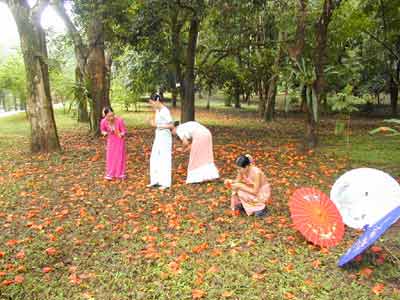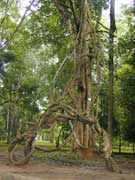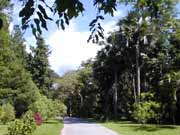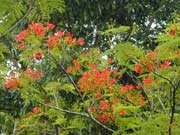 |
|
Sea of Flowers |
The Park of Trees has a fancy title of “an ecological park”, it is the basis of the Tropical Botanical Garden of Xishuangbanna and it undertakes important tasks such as collecting and protecting wild arbor plants and rare plants in dander, introducing important economic plants from inland and overseas, and improving environments for productions etc.
 |
|
Celastrus |
The Park of Trees was first established in 1959. It situates in the central part of the botanical garden. One of its essential task is to collect and protect both Chinese and foreign tropical plant resources as well as rare plants in danger; nowadays, a specialized protection area with the outer appearance of a park and the contents of a scientific study base has been constructed, which includes quarters such as the gymnosperm quarter, the material wood quarter, the quarter of imported plants, the quarter of oil plants, and the quarter of South Yunnan plants etc. The Park of Trees occupies an area of 16 hectares. There are altogether more than 1000 species of trees in it, including many ornamental evergreen, defoliated, and vine plants, such as
Spathodea campanulata originated from the tropical Africa, Cananga odroata for distilling essences,
Afara Terminalia with upright trunks, rain tree with a large top and beautiful shape, and world famous Queensland Nut,
Mauna Loa and Cashew etc., and the protection plants of many countries, such as
Terminalia myriocarpa Heurck et
Muell.- Arg., Garcinia paucinervis Chun et How, Shorea chinensis (Wang
Hsie) H. Zhu, Crypteronia paniculata Bl., Tetrameles nudiflora R. Br.,
Podocarpus imbricatus
Bl. etc. After nearly 40 years of cultivation and natural renewal, the trees within the park are already adumbral and a forest has begun to take shape. Nowadays, the Park has become a preservation place for introduced plants and wild plants, and a living specimen hall for scientific studies; as well as a base for universities, professional schools and garden researchers of Yunnan to go for field studies. In the wake of the continuous development of scientific studies, popular sciences, tourism and development, the Park of Trees is becoming an ecological park with the outer appearances of natural forests and beautiful landscapes and scientific contents.
|

|
 |
|
Park of Specimen
|
Albizzia julibrissin
|

|

|
|
Peacock Flower
(Delonix regia (Bojer) Raf.)
|
Bonbax ceiba
|

|